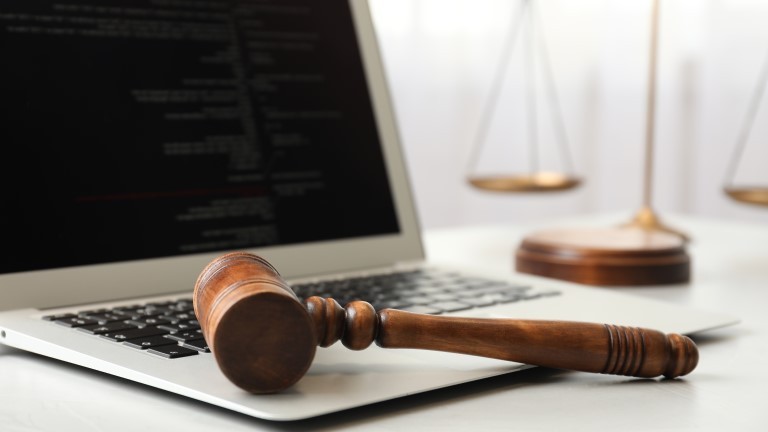Trial attorneys always want to present their best possible case and be the most zealous advocate for their client, but how do those desires translate to a virtual environment?
Trial advocacy is an art. Some lawyers are simply better at it than others (think Clarence Darrow and Mary Jo White). These attorneys possess uncanny story-telling abilities, excellent cross-examination skills, and the dual ability to focus and think quickly on their feet. Perhaps most important is the ability to master the familiar stage known as a courtroom.
As every good trial lawyer knows, it’s crucial to be able to master that stage. Trial attorneys want to present their best possible case by being the most zealous advocate for their client, but also by keeping the jury awake and engaged, whether it is a gritty murder trial in criminal court or a contract dispute in civil practice.
But how can you command the courtroom in a virtual environment? During the COVID-19 pandemic, many courts pivoted to electronic proceedings to meet the quarantine challenge and ensure access to justice for litigants. It was, and still is, a cost-effective and efficient solution to allow the business of courts to continue; and we saw everything from routine procedural hearings to fully remote jury trials.
The question remains for trial attorneys, however, how can they utilize the courtroom for dramatic effect if they’re not in the same room as judge or jury? While those gotcha moments may be harder to come by, effective virtual trial advocacy is possible. And you don’t have to be a tech nerd or legal geek to master this new skillset — but you just may have to reimagine what success might look like.
“We need to accept the fact that as trial attorneys, this is a new frontier — and the same old tricks are not going to work on camera,” says Carl Guthrie, Executive Director of the Texas Poverty Law Project and an attorney in the nation’s first virtual criminal trial.
Practice using legal technology… and don’t show up shirtless
The most important piece of advice Guthrie offers is simply to practice, practice, practice. The key to success in a courtroom, virtual or not, is adequate preparation. If you are prepared, you are going to be more confident and a better advocate for your client. Guthrie urges lawyers to really get to know their technology by doing dry runs ahead of time. If you don’t know how to use a feature or function of Zoom or other legal tech platforms, it can hurt you in front of a jury. “The constant refrain we hear in meetings is ‘Hey, you’re on mute… you’re on mute!’” Guthrie says. “You don’t want to do that in front of a jury.”

Also, if you are sharing evidence with opposing counsel via DropBox, make sure the court clerk and judge can also access it, or you might risk inadmissibility in court. Simply put, there are different tools depending on your court’s jurisdiction, and you must know them, and you must master them.
The other crucial piece of advice for lawyers is not to dress down for virtual appearances. While there have been stories of lawyers showing up on a virtual docket in workout clothes, shirtless or in bathing suits, that is not best practices, no matter how informal your jurisdiction. Courtroom etiquette still applies in the virtual world, and you don’t want to cut corners, even for simple status conferences without a jury present.
“It doesn’t matter if there is a jury or not, you should do everything you can to put yourself in the mindset, just like you were in a physical courtroom,” Guthrie adds.
Know your surroundings
In a virtual environment, your home or office becomes the focal point of the courtroom. What the judge or jury can see behind you will matter, and it could become an issue on appeal if there is anything in your background that can influence or prejudice the finder of fact. For example, if you have a whiteboard in your office, make sure it is clear of markings, especially if those markings pertain to your current case.
You also don’t want clutter in your office as it can distract a Zoom-fatigued audience. Have a space that is neat, orderly, and features good lighting are the best ways to create a good setting for your hearings. “We don’t all need a dark wood conference room with 13 editions of American Law Review in the background,” Guthrie explains. “But you can make sure your workspace is professional.”
Further, litigators should use their smaller, video window to their advantage, he explains. Just like when art moves from theater to film, the piece isn’t lost; it simply changes format, and the actors — in this case the lawyers — adapt to the modality.
Some additional tips include:
- Be aware — Know when you are on camera and when you aren’t.
- Eye contact is everything — Look directly into the camera and not at a second monitor. When you are looking at the camera, every single person thinks you are looking right at them. It is a powerful tool.
- See the audience — Make sure you can see your audience, judge, or jury even if you need to add a second monitor and a co-chair. You want to be able to monitor body language for feedback or cues.
- Have a separate chat platform for your client and witnesses — You need a line of communication with your client because lawyers have lost the ability to reach over and whisper to them or pass a note. But you also don’t want to hit the wrong button and disclose a client’s confidential message to the jury or opposing counsel.
The most important advice of all is to know the rules of court and practice them with your client, Guthrie says. Make sure everyone is aware of the rules at the outset, especially around what witnesses should be doing. “I remind my clients that if we don’t follow the rules, this is how we lose,” he says. “If you get caught breaking the rules, we’re done.”







